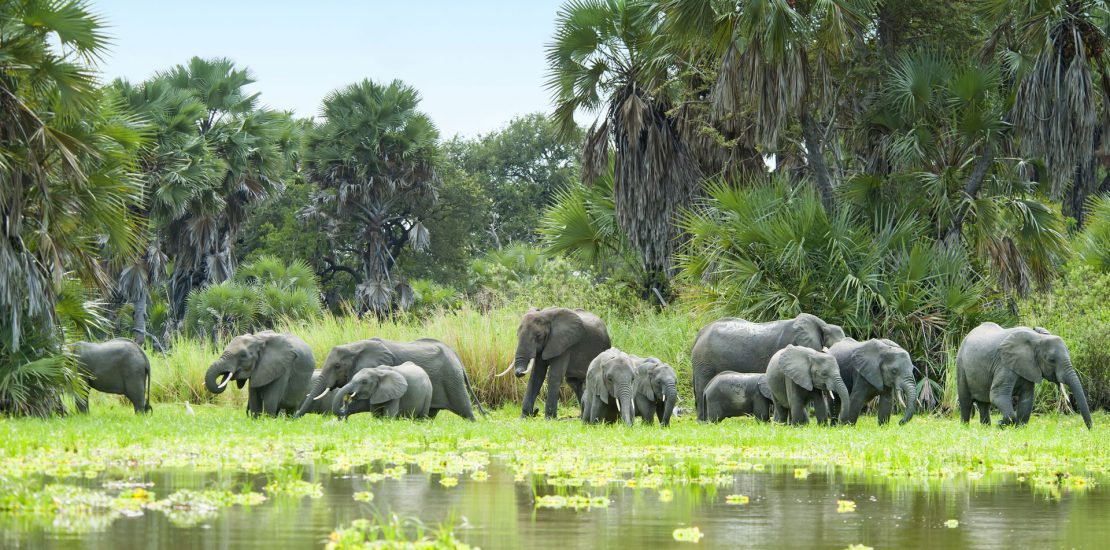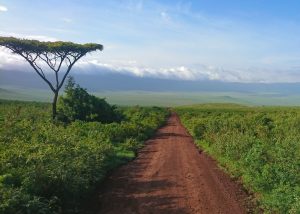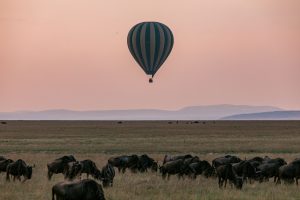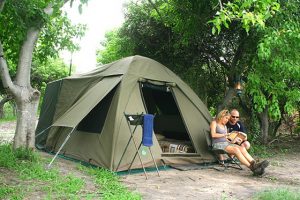- August 3, 2021
- Posted by: Love Uganda Safaris & Tours Ltd
- Categories: Blog, combined safaris

The Selous Game Reserve is located in the southern region of Tanzania. This game reserve is rich in diversity that includes wildlife worth exploring on a Tanzania safari. The Selous game reserve is the largest in size covering an area of 5000 square kilometers oversizing Serengeti national park which covers an area of 14,763 square kilometers.
The Selous game reserve is endowed with beauty and spectacular wonders of the world. Its vast size which is larger than Switzerland is primarily the reason behind the park’s beauty and splendor. Are you a traveler that is passionate about discovering new magical safari destinations? Making Tanzania’s Selous Game Reserve your number one priority is a calculated move.
History of Selous game reserve
Selous Reserve was first designated as a protected area in 1896 by a German governor of Tanganyika called Herman von Wissman. In early 1905, the reserve was turned into a hunting place because it had a large population of wildlife.
The Selous Game Reserve was established in 1922, named after Frederick Selous who used to carry out hunting of wildlife in the area. Fredrick Selous lost his life close to the Rufiji River fighting German colonial forces in the First World War. At this areas still died as an explorer and Scottish cartographer Keith Johnstone. Fredrick Selous lost his life close to the Rufiji River fighting German colonial forces in the First World War. In this area still died as an explorer and Scottish cartographer Keith Johnston. After it was being threatened by poaching and mining, Selous Game Reserve was declared a UNESCO World Heritage Site in 1982. Since then, the area has played a pivotal role in nature conservation, ecotourism, and sustainable tourism in Tanzania and the world at large.
Wildlife history
Selous game reserve had the world’s largest population of elephants that reached 109,000 elephants in 1976; the largest elephant population recorded in the world at the time. Other than the large numbers of elephants, Selous Game Reserve is home to multiple animal species. These include wild dogs, rhinos, lions, buffaloes, leopards, and hippopotamuses, to mention but a few. From time immemorial until now, hundreds of travelers from all corners of the world pay visits to this magical destination. Not only is Selous Game Reserve home to a vast number of animal species but also a reliable destination for bird lovers. On any African safari, seeing multiple tree species is a guarantee but with areas like Selous Game Reserve. The experience is taken to a different level. The Miombo woodlands take travelers on cloud nine.
Vegetation of Selous game reserve

These plains of the reserve contain miombo woodlands, savannah, grassland, wetlands and typical acacia.
River Rufiji is the longest river in Tanzania running and covering an area of about 600 kilometer pouring its waters into the Indian Ocean. The separated regions of Selous game reserve include the northern sector and the southern sector.
The northern sector of the reserve is famous for photographic safaris. Wildlife photography is best done in this area due to the beautiful scenic landscapes and wildlife. The northern sector shares the smallest percentage of the reserve making about 5% in the total area.
The southern sector of Selous reserve covers the biggest part of the reserve with it covering an area of about 1000 square kilometers.
What makes Selous Game Reserve so famous?
For not just one reason, Selous Game Reserve has been on the African safari destinations’ wall of fame over the past decades. The major reason behind this is the fact that Selous Game Reserve is the largest conservancy in Africa. Additionally, the Reserve is home to large numbers of animals such as elephants, giraffes, black rhinos, and cheetahs.
Are Selous Game Reserve and Nyerere National Park the Same Thing?
It is not new that the majority of people confuse Selous Game Reserve with Nyerere national park. The distinction is however simple! The northern sector of Selous Game Reserve was renamed Nyerere national park in the honor of the late and former president of Rwanda – Dr. Julius Kambalage Nyerere. Nyerere National Park includes the Rufiji River and a buffer zone to the south of the watercourse. In General, the whole conservation area is known as Selous Game Reserve. All the names lead to the same destination.
Which sector of Selous Game Reserve is the best for tourists?
Selous game Reserve is best as a whole not in terms of sectors. It all depends on what a tourist wants to see and do. On a well-organized Tanzania safari, travelers can get an opportunity to explore all four sectors of the park. The sectors of Selous Game Reserve include;
- Northern Selous sector
- Southern Selous sector
- Rufiji River sector
- Stiegler’s Gorge sector
The northern sector
Also known as Nyerere national park, the northern sector makes up to 8% of the total reserve land. Hunting in this region is prohibited and it was set aside for photographic tourism. In the event that you fancy nature photography, think about this sector during your Tanzania safari. In the northern Selous, travelers get an opportunity to see several species of birds.
The Southern Sector
Unlike other sectors, the Southern sector of the Reserve is open to leased hunters and safari tours are not allowed in this region. This sector is the biggest and takes the majority of the Reserve land.
The Rufiji River sector
This is the sector where all wildlife assembles to quench their thirst, especially during the dry season. It is the home to River Rufiji – Tanzania’s longest river. The river supplies the park and the local communities with water for domestic use. The slow meandering river and its tributaries, swamps, palm-fringed channels, and lakes combine in unison to make a whole beautiful picture of the Reserve making it a prime safari destination. On the other hand, seasonal flooding creates rich grasslands which feed thousands of herbivores which in turn attract multiple predators thus striking a balance in Africa’s ecosystems. This sector is also crossed by the smaller Kilombero and Ruaha rivers.
Travelers who visit this region are privileged to have spectacular views of the landscape and on a good day, they spot predators hunting down prey. Such moments on an African safari are a once-in-a-lifetime experience that should never be taken for granted. This sector is one of the most favorite sectors visited in Tanzania throughout the year.
Stiegler’s Gorge sector
Along the lower reaches of the magnificent River Rufiji lies the Stiegler’s Gorge. The gorge is 8 kilometers long and 100 meters deep and was named after a Swiss explorer who was killed by an elephant in the early 1900s. Visiting this sector comes with scenic views as well as the controversial new dam and hydraulic power plant. Wildlife species such as lions, leopards, elephants, giraffes, and rhinos can be spotted here.
Activities in Selous game reserve
- Game drives
- Bird watching
- Boat cruises
- Walking safaris
- Hot air balloon safari
- Fly camping
- Cultural tours
Hot air balloon safaris

The wildlife and landscapes of the reserve can be viewed from an aerial point using the air balloon. Air balloon safari only be done in Serengeti national park and Selous wildlife reserve. This is one of the experiences that give safaris another way to explore the hidden gems of the reserve. During hot air balloon safaris in the reserve, travelers can have epic sundowners (a meal at twilight) upon prior booking. This is an epic moment to dine in the wilderness and have spontaneous views of animals, plants, and birds in their natural habitats. This is a romantic moment for travelers who are on an African honeymoon safari.
Game drives in Selous Game Reserve
Do you ever dream about venturing into a true African wildlife safari? The Reserve can be the favorite destination. Happening in the mornings and afternoons, Selous game drives offer scenic views of multiple wildlife species. These are the magic of an African safari. During the game drives, you get to see lions, elephants, wild dogs, and giraffes, to point out just a few.
Bird watching in Selous Game Reserve
Like many African safari destinations, The Reserve is home to many bird species. Some birds are migratory (can be seen during specific seasons), others are rift valley endemics while others are elusive species. Within the woodlands, wetlands, and savannah plains of the park lie these magical birds.
Boat cruises
Selous Game Reserve offers some of the best boat cruise safaris in Tanzania and Africa as a whole. Sailing on the river Rufiji and its tributaries comes with more than just a water experience but rather a package of bird species, wildlife, plants, local members of the community, etc.
Walking safaris
During an African safari, travelers out to get off their safari vehicle and walk. The Reserve offers the best walking safaris in Tanzania. Following different trails, travelers dive into the wilderness with the company of a safari guide. This is the best moment to take closer looks and pictures of the many attractions that dwell here. Enjoy sunset and sunrise during the walks – an opportunity for you to make your African safari moments a memorable experience.
What are the major attractions in Selous Game Reserve?
Wildlife in the Reserve
The wildlife game in the reserve is a major attraction for the tourists that visit the place. Wildlife in the reserve includes 35,000 zebra species, 4,000 lions, 100,00 wildebeests, 145,000 buffaloes, 40,000 hippos, 250,000impalas, elands, waterbucks, bushbucks, leopards, crocodiles, hyenas, elands and many more.
Birdlife in Selous game reserve
Selous is home to over 440 different bird species. These live around the sandbanks, lagoons, water channels, swamps, and marshes that are within the Reserve. Birds to look out for include the colorful bee-eaters, kingfishers, yellow–billed storks, African spoonbill, Pel’s fishing owl, Spur–winged, white–fronted, Northern carmine bee-eater, Brown–headed parrot, Black–winged stilt, African skimmer, Broad-billed roller, Dickinson’s kestrel, Thick–billed cuckoo, Racket–tailed roller and many more. The best for bird watching in Nyerere (Selous) park is during the dry season.
What animals can I see in Selous Game Reserve?
When it comes to animals present in the Selous Game Reserve, the list is endless. It is a home to;
- Lions
- Elephants
- Wild dogs
- Leopards
- Cheetah
- Buffaloes
- Wildebeests
- The rare antelope
- Black rhinoceros
How to access Selous Game Reserve
One can access Selous by air, road, and rail.
Road: The Reserve is located in the southern region of Tanzania with a driving distance of approximately 4 hours driving 219 kilometers from Dar es Salaam, the capital of Tanzania.
By rail: Tourists that could want to use rail transport can use the Tanzania-Zambia railway from Dar es Salaam.
By air: A trip in a small aircraft from Dar Es Salaam will take 45 minutes, or 90 minutes alternatively from the airstrip in Ruaha National Park.
What is the best time to visit Selous Game Reserve?
Like many Tanzania safari destinations, The Game Reserve is open for travelers throughout the year. The dry months of June to October are the best for wildlife viewing since the grass is shorter and animals usually converge on the water sources. It remains crowd-free even during high seasons.
Where can I stay on a safari to Selous Game Reserve?

There are a number of accommodation facilities available for tourists for the up-market to the budget travelers. Accommodation in the Selous includes Siwandu camp, Lake Manze camp, Beho Beho, Sand river Selous, Sable mountain lodge, Selous Mapumziko lodge, Selous kinga lodge, Selous Mbuyu safari camp, Mwagusi safari camp, Beho Beho Tree house, Lake Manze camp, and many others. We can’t wait to take you there!
While planning a Tanzania wildlife safari, Selous reserve is among the best destinations in Tanzania to include on your bucket list. It is a crowd-free destination, unlike other parks such as Serengeti national park and Ngorongoro Conservation Area. Talk to us now and Book a Tanzania safari
Kindly comment if you found this article helpful, your feedback means a lot to us.
Leave a Reply
You must be logged in to post a comment.
